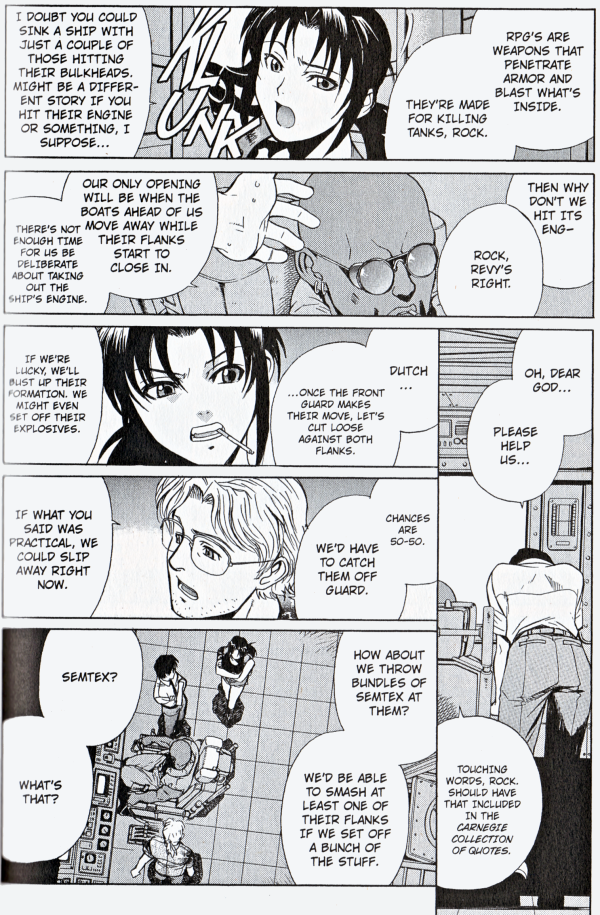 Nearly seven years after it began, the English edition of Hikaru no Go has finally reached the final volume. I was originally both curious and skeptical about the final arc of the series, in which Hikaru and long-time rival Akira Toya represent Japan in the first Hokuto Cup (against China and Korea), but this was mostly because I’d liked where the anime chose to bring the story to a close. Having now finished the manga, though, I find it comes to quite a satisfying conclusion, after all.
Nearly seven years after it began, the English edition of Hikaru no Go has finally reached the final volume. I was originally both curious and skeptical about the final arc of the series, in which Hikaru and long-time rival Akira Toya represent Japan in the first Hokuto Cup (against China and Korea), but this was mostly because I’d liked where the anime chose to bring the story to a close. Having now finished the manga, though, I find it comes to quite a satisfying conclusion, after all.
Volume 21 wraps up the qualifying rounds, with a few final moments of character insight for Ochi—who, even though he wins his game, can’t stand the thought that he’d be the weak link on the team—and Waya, who realizes he hasn’t got Ochi’s pride, and was relieved not to have to play against tougher opponents. Once the Japanese team is set, consisting of Hikaru and Akira plus Yashiro, a player from the Kansai go Association, they spend the days leading up to the tournament crashing at Akira’s house, staying up all night studying game records and devouring the bento boxes Hikaru’s sweet mother prepared for them. (Hikaru treats his mother somewhat dismissively here, but after learning that Yashiro receives no support from his parents regarding his career, he has a change of heart and sort of, kind of invites her to watch him play.)
 Right before the tournament begins, Hikaru learns that one of the Korean players, the handsome Ko Yong Ha, has made disparaging remarks about Shusaku, who was actually, of course, Sai. While Akira wonders why Hikaru takes the insult so personally (he will never actually learn the answer), Hikaru gets all fired up and ends up getting in a tough spot in his first game against China. There’s a nice moment where he realizes he’s going to have to stage his own comeback—“There’s nobody else here to do it”—and though he fails, his performance is impressive enough to convince Kurata, the Japanese team leader, to agree to Hikaru’s request to play in first position against Korea, so he can challenge Ko Yong Ha head-on.
Right before the tournament begins, Hikaru learns that one of the Korean players, the handsome Ko Yong Ha, has made disparaging remarks about Shusaku, who was actually, of course, Sai. While Akira wonders why Hikaru takes the insult so personally (he will never actually learn the answer), Hikaru gets all fired up and ends up getting in a tough spot in his first game against China. There’s a nice moment where he realizes he’s going to have to stage his own comeback—“There’s nobody else here to do it”—and though he fails, his performance is impressive enough to convince Kurata, the Japanese team leader, to agree to Hikaru’s request to play in first position against Korea, so he can challenge Ko Yong Ha head-on.
For Hikaru, of course, this isn’t about personal glory. It’s about honoring Sai’s legacy. “The whole reason I play Go is…” he starts to say, but he doesn’t complete this thought until later. While he and Ko Yong Ha play a riveting game—and how awesome is it to see a packed crowd raptly following the analysis of the game, including familiar faces like Tsutsui (looking rather foxy, I must add)?—Toya Meijin and Yang Hai, the leader of the Chinese team, talk about Sai, the mysterious player who appeared on the Internet a few years ago, and indulge in some fanciful speculation that he might’ve been the spirit of Shusaku.
 It’s kind of neat that they got it right, but will never know it, and it’s wonderful that Sai was responsible for reinvigorating a genius player like the Meijin, and inspiring who knows how many others. Indeed, though Hikaru ends up losing the game by a close margin (I actually love that the Japanese team didn’t cruise to an unlikely victory), his performance is shown to inspire a pair of insei and in this way, Sai’s legacy continues.
It’s kind of neat that they got it right, but will never know it, and it’s wonderful that Sai was responsible for reinvigorating a genius player like the Meijin, and inspiring who knows how many others. Indeed, though Hikaru ends up losing the game by a close margin (I actually love that the Japanese team didn’t cruise to an unlikely victory), his performance is shown to inspire a pair of insei and in this way, Sai’s legacy continues.
As Hikaru explains, he began playing go “so I could link the distant past to the far future.” The conclusion of the series, though open-ended, shows that he is succeeding in this goal, even though his current match ended in defeat. As Akira wisely points out, “It doesn’t end here, y’know. In fact, it’s barely started.” This idea is echoed by the lovely cover to the final volume, on which Hikaru and Akira gaze with clear eyes at the path that lies ahead.
For more discussion of Hikaru no Go, please check out the commemorative roundtable at Manga Bookshelf!




















Recent Comments